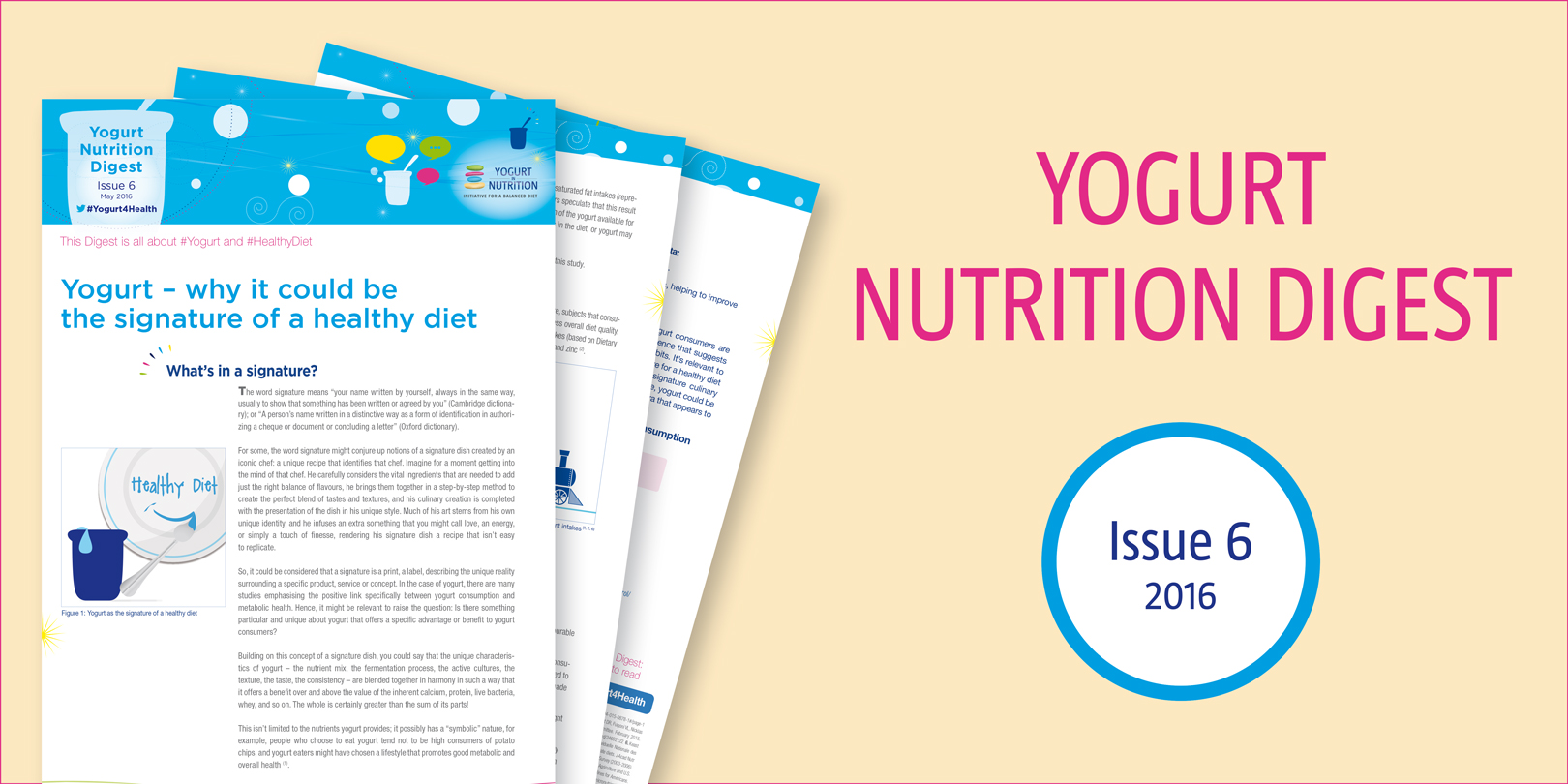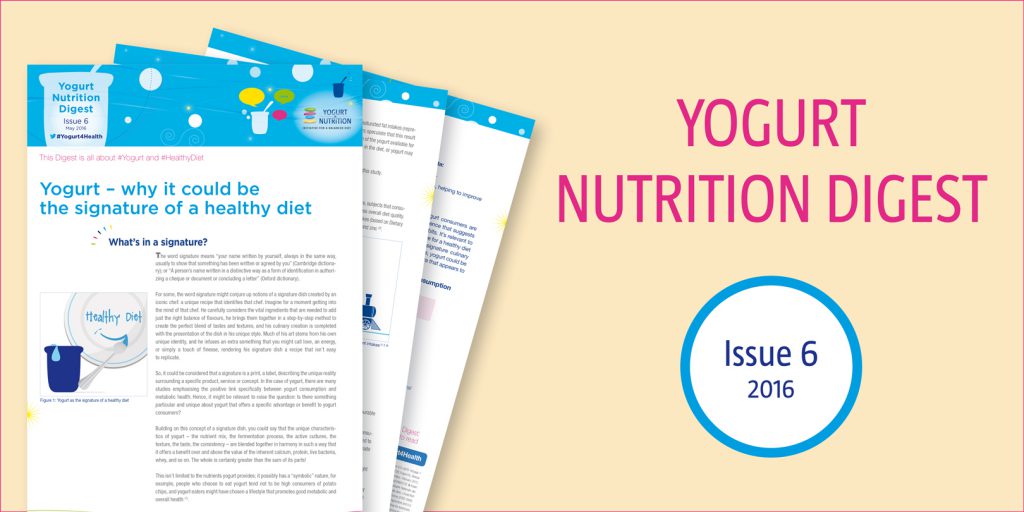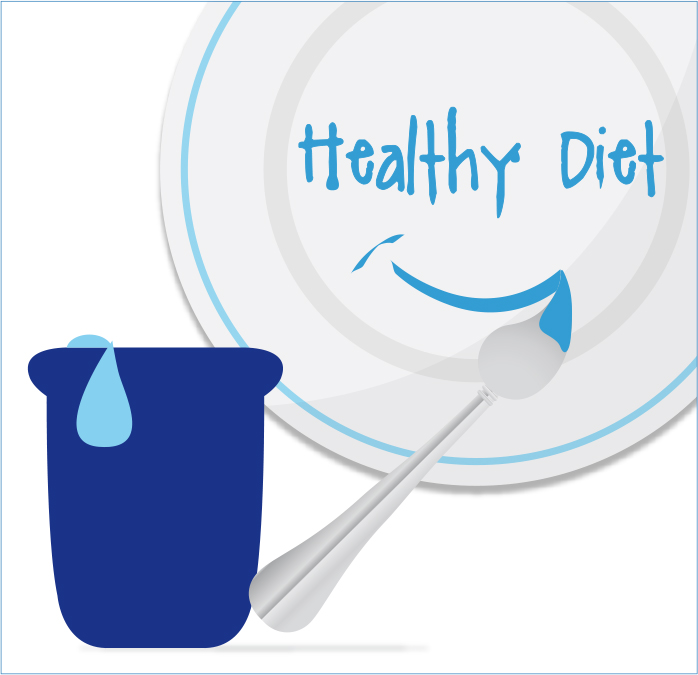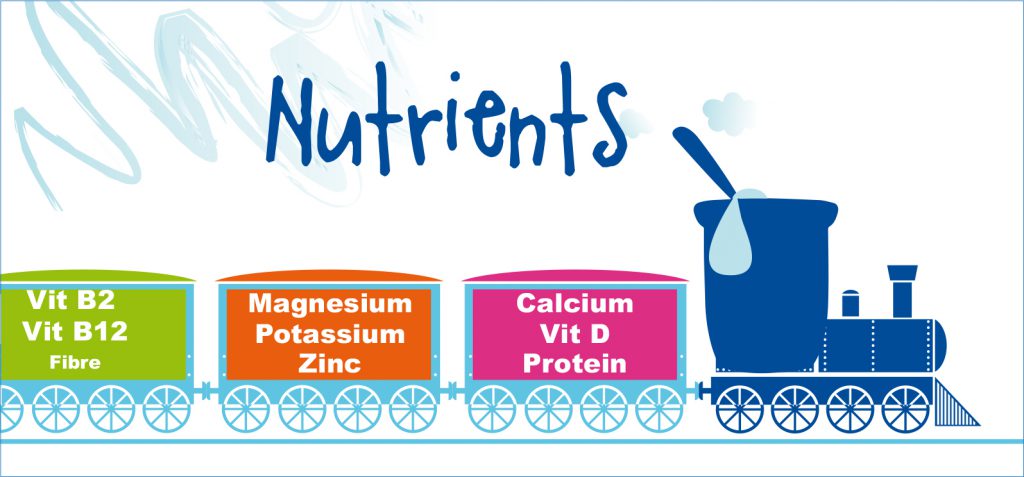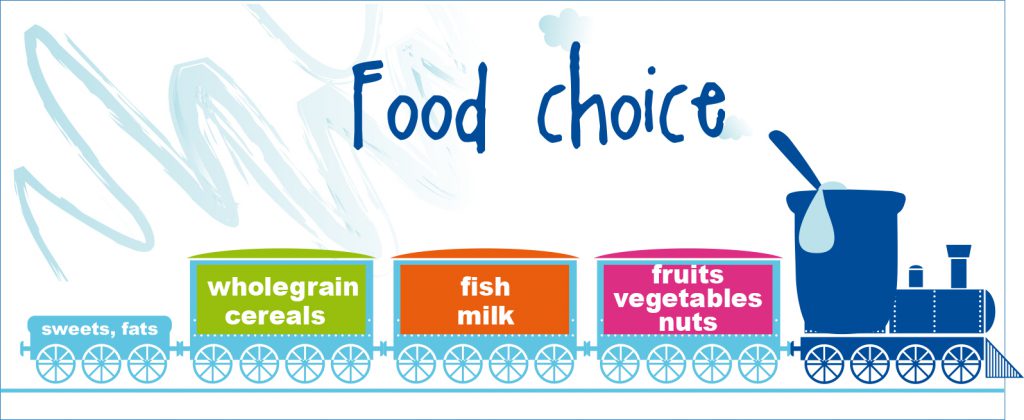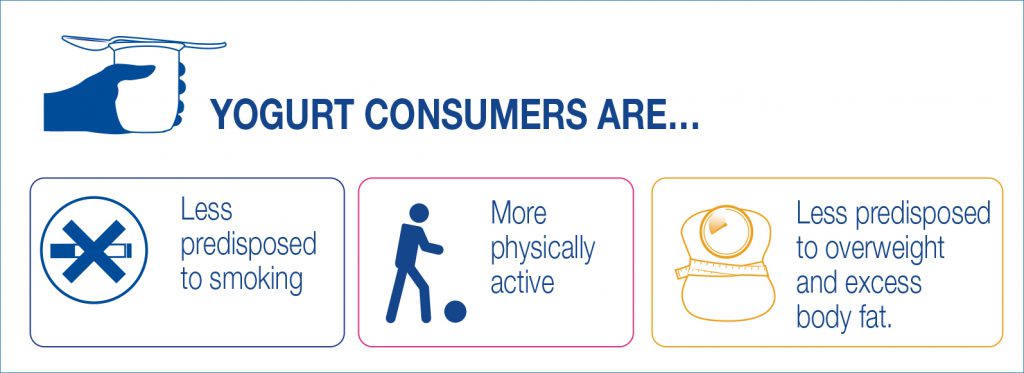This Digest is all about #Yogurt and #HealthyDiet
What’s in a signature?
The word signature means “your name written by yourself, always in the same way, usually to show that something has been written or agreed by you” (Cambridge dictionary); or “A person’s name written in a distinctive way as a form of identification in authorizing a cheque or document or concluding a letter” (Oxford dictionary).
For some, the word signature might conjure up notions of a signature dish created by an iconic chef: a unique recipe that identifies that chef. Imagine for a moment getting into the mind of that chef. He carefully considers the vital ingredients that are needed to add just the right balance of flavours, he brings them together in a step-by-step method to create the perfect blend of tastes and textures, and his culinary creation is completed with the presentation of the dish in his unique style. Much of his art stems from his own unique identity, and he infuses an extra something that you might call love, an energy, or simply a touch of finesse, rendering his signature dish a recipe that isn’t easy to replicate.
So, it could be considered that a signature is a print, a label, describing the unique reality surrounding a specific product, service or concept. In the case of yogurt, there are many studies emphasising the positive link specifically between yogurt consumption and metabolic health. Hence, it might be relevant to raise the question: Is there something particular and unique about yogurt that offers a specific advantage or benefit to yogurt consumers?
Building on this concept of a signature dish, you could say that the unique characteristics of yogurt – the nutrient mix, the fermentation process, the active cultures, the texture, the taste, the consistency – are blended together in harmony in such a way that it offers a benefit over and above the value of the inherent calcium, protein, live bacteria, whey, and so on. The whole is certainly greater than the sum of its parts!
This isn’t limited to the nutrients yogurt provides; it possibly has a “symbolic” nature, for example, people who choose to eat yogurt tend not to be high consumers of potato chips, and yogurt eaters might have chosen a lifestyle that promotes good metabolic and overall health (1).
Reference: Cormier H, Thifault E, Garneau V, Tremblay A, Drapeau V, Pérusse L, Vohl MC. Association between yogurt consumption, dietary patterns, and cardio-metabolic risk factors. Eur J Nutr, 2015.
Uniqueness of Yogurt – specific properties of yogurt facilitate improved nutrient intake
What’s in it? Yogurt is generally considered to be a nutritionally dense food, especially for nutrients such as calcium, proteins (Digest 1), and some vitamins. Higher diet quality (for potassium, vitamins B2 and B12, calcium, magnesium and zinc) has been observed with increased dairy consumption (2, 3).
The 2015 Dietary Guidelines for Americans defined “nutrients of concern” as those nutrients that may pose a substantial public health concern. The Committee determined that calcium, potassium, vitamin D, and fibre are under-consumed and may pose a public health concern (4, 5). Dairy foods, including yogurt, are major dietary contributors of three of the four nutrients of concern.
Milk provides nine essential nutrients important for optimal health: calcium, potassium, phosphorus, protein, vitamins A, D and B12, riboflavin, and niacin (niacin equivalents). The nutrient composition of milk and yogurt are similar; however, yogurt represents a more concentrated source of riboflavin, vitamin B12, calcium, magnesium, zinc, and potassium. Hence, the dairy food group is a substantial contributor of many of the above nutrients (e.g., calcium, phosphorus, vitamin A, vitamin D, and protein), all of which should work towards promoting health.
Recent work using the National Health and Nutrition Examination Survey (NHANES 2005-2008) has shown that dairy foods, including full-fat varieties, are key components of the American diet that contribute a significant amount of the essential nutrients calcium, vitamin D and protein, to the diet (6).
Data from the French dietary survey (Etude Individuelle Nationale sur les Consommations Alimentaires, INCA 2006 (7)) was analysed by using computerized modelling, which enabled the researchers to examine theoretical dietary patterns that would meet nutrient needs within calorie needs. The diet optimization model suggested that French individuals should choose more nutrient-dense foods, including more fruits, vegetables, whole grains, and dairy foods. For the dairy foods, the model suggested replacing some cheese consumption with additional yogurt to help reduce the energy density of the diet and to ensure nutrient adequacy (8). While this study was focused on the French population, the premise of selecting a healthy diet pattern that includes nutrient-rich yogurt can help individuals meet nutrient needs.
References:
2. Wang H, Livingston KA, Fox CS, Meigs JB, Jacques PF. Yogurt consumption is associated with better diet quality and metabolic profile in American men and women. Nutr Res, 2013; 33(1):18-26.
3. O’Neil CE, Keast DR, Fulgoni VL, Nicklas TA. Food sources of energy and nutrients among adults in the US: NHANES 2003–2006. Nutrients 2012; 4(12):2097-120.
4. USDA. Scientific Report of the 2015 Dietary Guidelines Advisory Committee. February 2015.
5. Webb D, Donovan SM, Meydani SN. The role of yogurt in improving the quality of the American diet and meeting dietary guidelines. Nutr Rev, 2014; 72(3):180-9. (Review)
6. Keast DR, Hill Gallant KM, Albertson AM, Gugger CK, Holschuh NM. Associations between yogurt, dairy, calcium, and vitamin D intake and obesity among U.S. children aged 8–18 years: NHANES, 2005–2008. Nutrients 2015; 7:1577-1593.
7. AFSSA. Étude Individuelle Nationale des Consommations Alimentaires 2 (INCA 2) (2006-2007) – Rapport, September 2009. https://www.anses.fr/fr/system/files/PASER-Ra-INCA2.pdf
8. Clerfeuille E Maillot M, Verger EO, Lluch A, Darmon N, Rolf-Pedersen N. Dairy products: how they fit in nutritionally adequate diets. J Acad Nutr Diet, 2013; 113: 950-6.
The Dairy Fat Paradox
Fat has, for decades, been considered a “big baddie”. Government guidelines warn us of the dangers of saturated fat, including that from dairy foods. Milk and cheese are substantial contributors of calories and saturated fat to the US diet, but they are also significant nutrient providers (9). For example, the authors state that “Three of the top 10 sources of calories and saturated fats (beef, milk and cheese) contribute 46.3% of the calcium, 49.5% of the vitamin D, 42.3% of the vitamin B12 as well as other essential nutrients to the American diet.” So, the totality of the food should be considered when constructing a healthy diet.
Perhaps surprisingly, total and saturated fat intakes have been negatively related to yogurt and dairy consumption including cheeses (6). This analysis used nationally representative data to examine the associations between yogurt and dairy consumption on macro- and micronutrient intakes and indicators of overweight/obesity in children. The authors showed that yogurt and dairy consumption, regardless of fat contribution, were related to higher intakes of calcium, vitamin D, and protein.
Further, the authors reported that yogurt intake was associated with lower total and saturated fat intakes (represented as percent total daily energy intake) in children 8 – 18 years old. The authors speculate that this result could be due to the fact that low-fat and fat-free yogurts represent a large proportion of the yogurt available for consumption in the U.S. Additionally, yogurts could be displacing other high fat foods in the diet, or yogurt may simply be a marker for a more healthful dietary pattern.
Yogurt intake was also associated with a lower BMI and lower waist circumference in this study.
References:
6. Keast DR, Hill Gallant KM, Albertson AM, Gugger CK, Holschuh NM. Associations between yogurt, dairy, calcium, and vitamin D intake and obesity among U.S. children aged 8–18 years: NHANES, 2005–2008. Nutrients 2015; 7:1577-1593.
9. Huth PJ, Fulgoni VL 3rd, Keast DR, Park K, Auestad N. Major food sources of calories, added sugars, and saturated fat and their contribution to essential nutrient intakes in the U.S. diet: data from the National Health and Nutrition Examination Survey (2003-2006). Nutr J, 2013; 12(1):116.
Yogurt eaters eat better
Apart from the above evidence on the nutrient contribution of yogurt due to its inherent nature, subjects that consumed yogurt had a higher Dietary Guidelines Adherence Index (DGAI), which is used to assess overall diet quality. Yogurt consumers had higher potassium intakes and were less likely to have inadequate intakes (based on Dietary Reference Intake) of several vitamins, including vitamins B2 and B12, calcium, magnesium, and zinc (2).
Reference:
1. Cormier H, Thifault E, Garneau V, Tremblay A, Drapeau V, Pérusse L, Vohl MC. Association between yogurt consumption, dietary patterns, and cardio-metabolic risk factors. Eur J Nutr, 2015.
2. Wang H, Livingston KA, Fox CS, Meigs JB, Jacques PF. Yogurt consumption is associated with better diet quality and metabolic profile in American men and women. Nutr Res, 2013; 33(1):18-26.
6. Keast DR, Hill Gallant KM, Albertson AM, Gugger CK, Holschuh NM. Associations between yogurt, dairy, calcium, and vitamin D intake and obesity among U.S. children aged 8–18 years: NHANES, 2005–2008. Nutrients 2015; 7:1577-1593.
Uniqueness of Yogurt – Yogurt is a vehicle for quality of the whole diet
Beyond its nutrient content, there is evidence suggesting that yogurt consumption might exert a favourable impact on other food choices.
Data from the Framingham Heart Study Offspring indicated that diet quality might be improved in yogurt consumers (2). As well as the data showing that the DGAI score tended to be greater in yogurt consumers compared to non-consumers, fibre intake was significantly greater in yogurt consumers in whom yogurt consumption made up 2% of total energy intake.
These observations might raise the research hypothesis that eating yogurt, for instance at snack time, might orientate food preferences at the subsequent meal.
This is in agreement with the Zhu et al study (10) who used NHANES cohorts to demonstrate that the healthy eating index (HEI, another diet quality score) of frequent yogurt consumers was better than that observed in infrequent consumers. Yogurt consumers (US children) have a greater intake of fruits, whole grains and milk indicating a better compliance to the dietary guidelines.
References:
2. Wang H, Livingston KA, Fox CS, Meigs JB, Jacques PF. Yogurt consumption is associated with better diet quality and metabolic profile in American men and women. Nutr Res, 2013; 33(1):18-26.
10. Zhu Y1, Wang H, Hollis JH, Jacques PF. The associations between yogurt consumption, diet quality, and metabolic profiles in children in the USA. Eur J Nutr, 2014.
Can a little sugar in yogurt be a good thing?
Both the 2010 and 2015 Dietary Guidelines for Americans (11,12) state that diets should focus on nutrient-dense foods including fruits and vegetables, whole grains, and dairy foods to meet nutrient needs. Additionally, the 2010 report indicates that added sugars are acceptable to increase the palatability of nutrient-rich foods, such as yogurt (Digest 4).
Hess et al (13) indicated that American children aged 2-11 consume extra energy and sugar in their diet, but insufficient amounts of vitamin D, calcium and potassium. The fat in a whole milk yogurt provides flavour and this may reduce the need for added sugars to increase palatability. A 6 oz pot of plain whole milk yogurt contains a total of 8 g of sugar, as well as vitamin D (if fortified), calcium, and potassium, comparable to that of a low fat, flavoured yogurt (14). Increasing acceptability and availability of whole milk yogurts with low total sugar content may thus be a beneficial way to encourage health-promoting and nutrient-dense snacking among children without raising sugar consumption.
In this context, the authors proposed that swapping current snacks with fruits or vegetables, as well as one serving of low sugar whole milk yogurt, could reduce such imbalances between energy intake and micronutrient intakes. This study shows that increasing palatability and acceptability of yogurt, whether this be raising fat or adding sugar, may be a beneficial way to meet nutrient needs. Another way is to choose whatever yogurt you enjoy, just do it in moderation.
These observations appear to indicate that:
• There is a beneficial relationship between yogurt and the intake of nutrients.
• This relationship generally favours an increase in nutrient density and has also been associated with a potential decrease of the energy density of the diet.
References:
11. U.S. Department of Agriculture and U.S. Department of Health and Human Services. Dietary Guidelines for Americans, 2010, 7th ed. Washington, DC: U.S. Government Printing Office; 2010.
12. U.S. Department of Health and Human Services and U.S. Department of Agriculture. 2015 – 2020 Dietary Guidelines for Americans. 8th Edition. December 2015.
13. Hess J and Slavin J. Snacking for a cause: nutritional insufficiencies and excesses of U.S. children, a critical review of food consumption patterns and macronutrient and micronutrient intake of U.S. children. Nutrients, 2014 ; 6: 4750-9.
14. U.S. Department of Agriculture, Agricultural Research Service USDA National Nutrient Database for Standard Reference, Release 26. Nutrient Data Laboratory Home Page.
19. Mozaffarian D. Dietary and policy priorities for cardiovascular disease, diabetes, and obesity. A comprehensive review. Circulation, 2016; 133:187-225.
Can eating yogurt affect dietary patterns?
The Canadian Infogene study (1) examined the relationship between the consumption of specific foods and prudent/western dietary patterns.
As one would expect, the regular consumption of vegetables, fruits, nuts, legumes, fish and yogurt were positively related to a prudent dietary pattern whereas they tended to be negatively related to a western dietary pattern. This is consistent with the fact that yogurt consumers in this study were less prone to overweight and to an unfavourable metabolic profile.
References:
1. Cormier H, Thifault E, Garneau V, Tremblay A, Drapeau V, Pérusse L, Vohl MC. Association between yogurt consumption, dietary patterns, and cardio-metabolic risk factors. Eur J Nutr, 2015.
2. Wang H, Livingston KA, Fox CS, Meigs JB, Jacques PF. Yogurt consumption is associated with better diet quality and metabolic profile in American men and women. Nutr Res, 2013; 33(1):18-26.
10. Zhu Y1, Wang H, Hollis JH, Jacques PF. The associations between yogurt consumption, diet quality, and metabolic profiles in children in the USA. Eur J Nutr, 2014.
Uniqueness of Yogurt – could simply eating yogurt promote a healthier lifestyle?
This topic leads us towards a more mysterious issue! It’s possible that the consumption of a specific food (i.e. yogurt) might have a beneficial impact on the global lifestyle of people, because of its symbolic value or undocumented effect…a bit like the chef’s signature dish.
Do yogurt eaters tend not to smoke?
This is what we might be inclined to believe when considering the results of the recent Brazilian study suggesting that yogurt consumers are less predisposed to smoking (15). Yogurt consumption was associated with a healthier lifestyle in Brazilian adults. They were less dependent on alcohol, and had a lower smoking status. Non-consumers also showed a higher risk of Type 2 diabetes, hypertension and heart disease.
Are yogurt eaters more active?
The Brazilian study also provided evidence suggesting that yogurt consumers are more physically active and tend to be less overweight compared to non-consumers. Recently an Italian study provided concordant results showing that yogurt consumers are more physically active (16, 17).
This issue has also been examined in the Québec family study, for which preliminary data analysis revealed that female yogurt consumers are more physically active, in association with a reduced body weight (18).
Eat yogurt: watch your weight
There’s an interesting study reported by Mozaffarian (19) who also used the data of large cohorts to demonstrate that weight gain over time was less pronounced in individuals who reported an increased consumption of some foods including yogurt, as well as nuts, whole grains and fruits. And, not surprisingly, the consumption of foods such as potato chips and processed meats was associated with the opposite effects on weight gain.
Interestingly, when yogurt consumers were followed over a 6-year period (Québec study), they remained less predisposed to overweight and excess body fat.
References:
15. Possa G, de Castro MA, Marchioni DM, Fisberg RM, Fisberg M. Probability and amounts of yogurt intake are differently affected by sociodemographic, economic, and lifestyle factors in adults and the elderly-results from a population-based study. Nutr Res, 2015; 35(8):700-6.
16. D’addezio LD, Mistura L, Sette S, Turrini A. Sociodemographic and lifestyle characteristics of yogurt consumers in Italy: Results from the INRAN-SCAI 2005-06 Survey. Med J Nutrition Metab, 2015 ; 8:119–129.
17. Fisberg et al, submitted for publication
18. Tremblay et al, unpublished data.
19. Mozaffarian D. Dietary and policy priorities for cardiovascular disease, diabetes, and obesity. A comprehensive review. Circulation, 2016; 133:187-225.
In conclusion
Three top concepts appear to be emerging from the above data:
1. Yogurt consumers seem to have more adequate nutrient intakes.
2. People who eat yogurt tend to make other healthier food choices, helping to improve overall diet quality.
3. Yogurt consumption is linked to other healthy lifestyle habits.
There is no clear explanation that allows us to understand why yogurt consumers are characterized by a healthier lifestyle, but there does seem to be evidence that suggests that we could consider yogurt as a marker of healthy diet & eating habits. It’s relevant to consider that yogurt consumption ultimately appears to be the signature for a healthy diet and lifestyle. Just as the renowned chef painstakingly prepares his signature culinary creation using a blend of ingredients and that extra dose of love and care, yogurt could be seen as a combination of inherent nutrients plus that little something extra that appears to facilitate overall good health.
There appears to be a relationship between yogurt consumption and the health status of the consumer:
YOGURT MIGHT INDEED BE A SIGNATURE OF A HEALTHY DIET & LIFESTYLE

